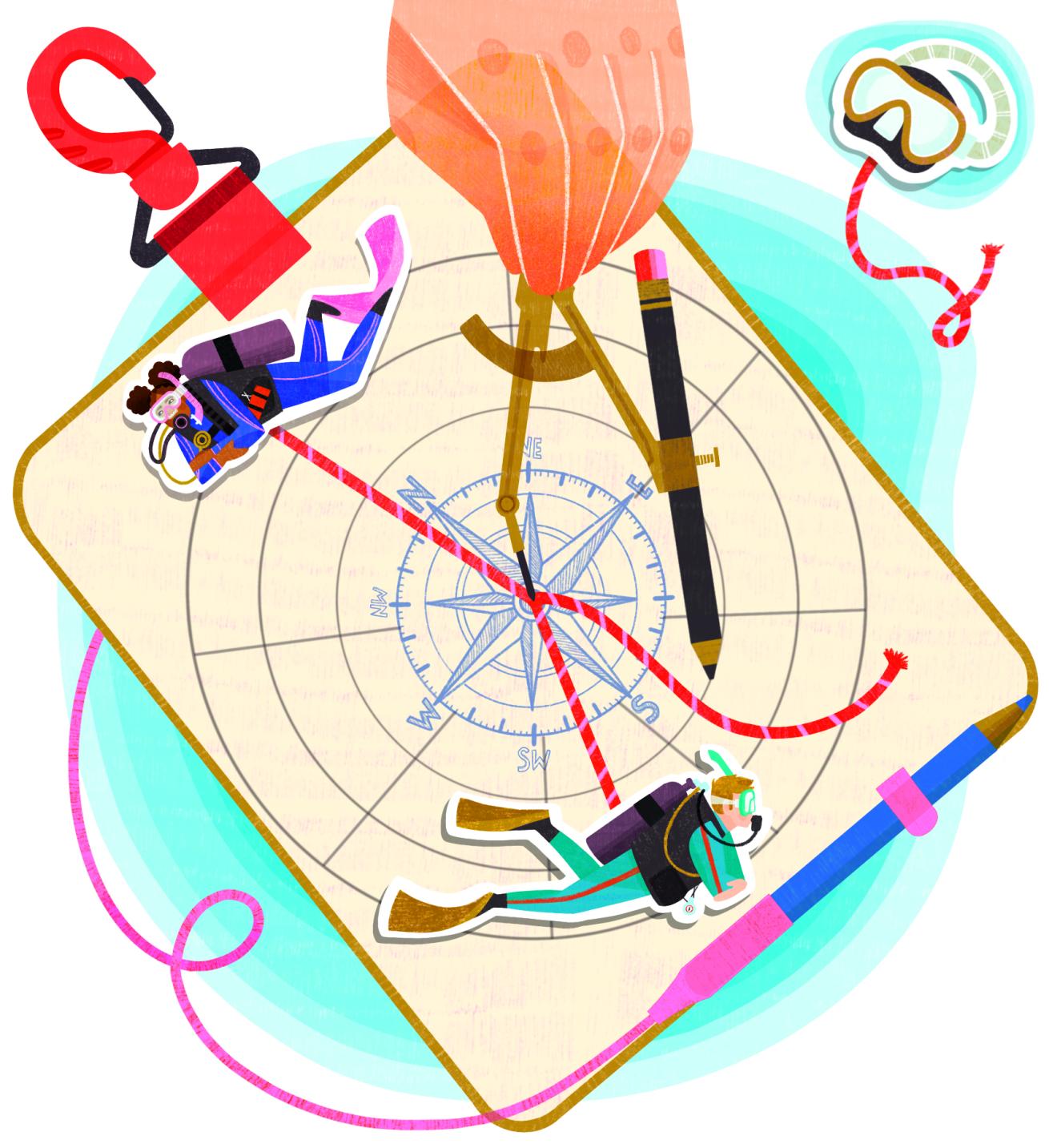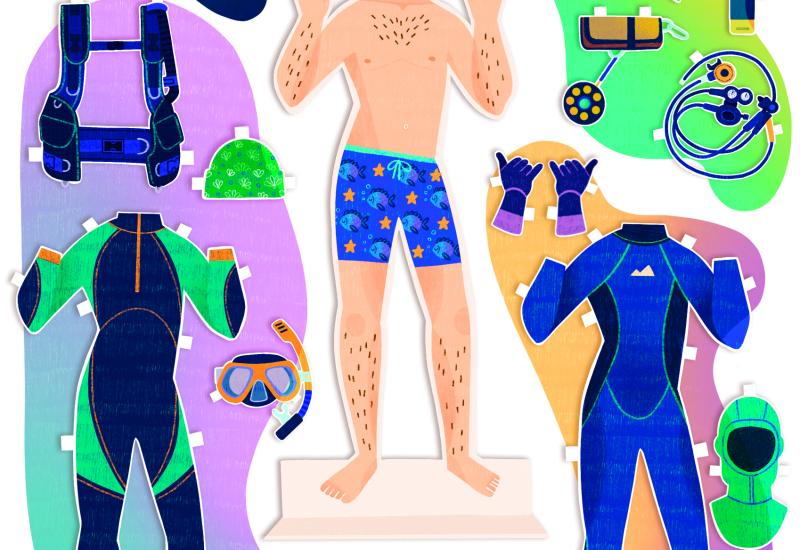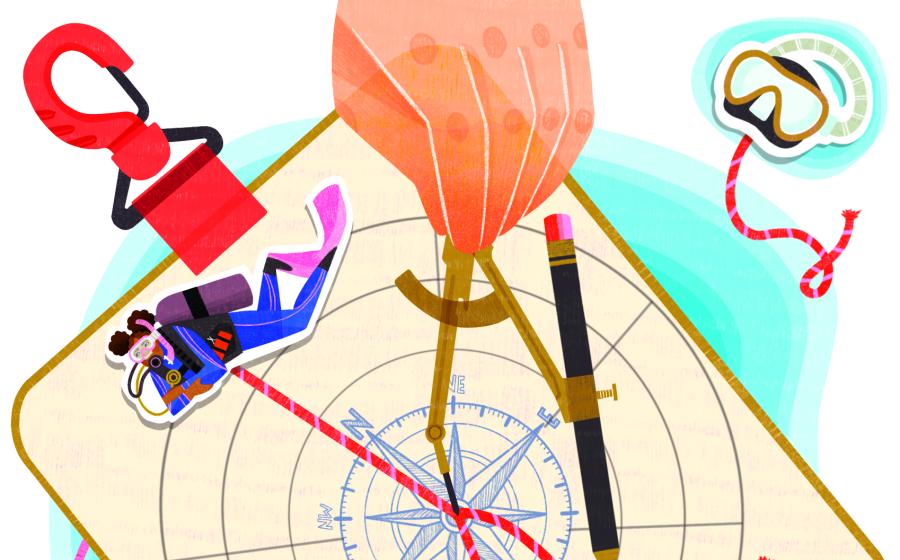How Do I Dive for Lost Items?

Illustration: Lauren RebbeckPADI Pro Annie Crawley shares her tips for looking for lost items.
Dear Annie,
I recently tried to search for my buddy's lost mask and came up empty-handed. Is there a better way to search for lost items? What would be a good course to take, and what kind of gear do I need? - Sloppy Searcher
Dear Searcher,
I carry a spare mask in my save-a-dive kit for this reason. Beginner divers can lose their masks when they place them on their foreheads. The best place for your mask is on your face, but if you need to take it off at the surface, put it around your neck or arm rather than on your forehead.
Three common search patterns are used to find lost items: The circle search or pendulum method is used when you know where an object was lost. For the circle search method, you’ll attach a distance line to a central point, such as the mooring line or descent line, and gradually expand the circumference of the circle based on bottom composition and visibility. In areas with varying depths, this pattern can be adjusted to the pendulum method in which you will stop, expand and reverse direction at the end of each arc.
Related Reading: How Can I Find a Dive Guide Who Respects My Limits?
The expanding square search also uses a fixed object in the center. You’ll use a compass and either right- or left-hand 90-degree turns. Each side should be slightly longer than the last to gradually increase the size of the square, like a straight-sided spiral. Use a slate to draw your square with the four compass headings you’ll need for each side as well as the kick cycles for each turn. Depending on visibility, you can start with two kick cycles, and add kicks with each turn. This method covers fairly large distances but is not ideal in strong currents, surge or varying depths.
The U search pattern can be used in currents and varying depths regardless of visibility. It can be tricky, as you need to use both left- and right-hand 90-degree turns, yet it is very effective. When using the U pattern in varying depths, start at the deepest point first and run patterns parallel to depth, using this as an additional guide to the pattern.
When using your compass, center the lubber line and keep the compass flat to allow the bezel to float freely. Go slow. If you have a digital compass in your computer, learn how to calibrate it.
Related Reading: How Do I Stay Comfortable in Cold Water?
Decide with your buddy before descending what your roles will be, and go over extra communication needs. Carry a slate with the drawn-out plan, degree headings and kick cycles to prevent confusion. When choosing a pattern, consider depth changes. Be aware of your time, air supply, no-deco limits and depth throughout the search. Always plan a start and end time for your dive, and let someone on land know your plan.
The PADI Advanced Open Water Diver (AOWD) course covers navigation skills, including estimating distances, natural navigation and compass use. For additional training, opt to do the search and recovery elective dive in your AOWD course or invest in the full PADI Search and Recovery specialty course to solidify your skills. In the course, you’ll learn a variety of search patterns based on conditions, bottom composition and the size of the lost objects. You’ll learn to define and mark a search area, use a lift bag, work as a buddy team, plan searches and use advanced navigation techniques.
I look forward to hearing about your future successful recoveries. These are foundational skills all divers can use!

Ask Annie
PADI Master Scuba Diver Trainer Annie Crawley answers your most pressing questions about dive etiquette, training qualms and gear analysis with zero judgment and a whole lot of lived experience.
Have a question for Annie? Send to [email protected] with the subject "Ask Annie".










